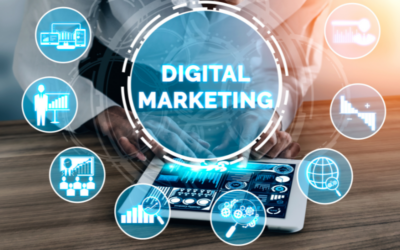Email marketing remains a powerful tool for businesses to connect with their audience, drive sales, and build lasting relationships. However, with crowded inboxes and short attention spans, creating high-conversion emails has become an art form.
This blog post will delve into the essential elements and strategies to help you craft compelling emails that drive higher conversion rates.
Understand Your Audience
The first step to creating high-converting emails is understanding your audience. Know who they are, what challenges they face, and what motivates them. Develop detailed buyer personas to tailor your emails to specific segments of your target audience. Personalization is crucial in capturing your recipients’ attention and resonating with them on a deeper level.
Attention-Grabbing Subject Lines
Your subject line is the gateway to your email. It’s the first thing recipients see, and it determines whether they open or delete your message. Craft attention-grabbing subject lines that evoke curiosity, urgency, or benefit-driven statements. Avoid using all caps or excessive punctuation, as they can trigger spam filters and turn off recipients.
Engaging and Relevant Content
Once your email is opened, the content must be engaging, relevant, and valuable. Use concise and clear language, and focus on addressing your audience’s pain points. Create a compelling story that showcases the benefits of your product or service. Use images strategically to support your message, but ensure they don’t overshadow the text.
Strong Call-to-Action (CTA)
Your email should have a clear and compelling call-to-action that directs recipients towards the desired action, such as making a purchase, signing up for a webinar, or downloading an eBook. Use action-oriented language and create a sense of urgency. Experiment with the placement and design of your CTA button to make it stand out.
Mobile-Friendly Design
With the majority of emails being opened on mobile devices, it’s essential to create emails with responsive design. Test your emails on various devices to ensure they render correctly and are easy to read on small screens. Keep the email width narrow, use legible fonts, and include enough white space for better readability.
Build Trust with Personalization
Personalization goes beyond using the recipient’s name in the salutation. Use data and segmentation to deliver personalized content that aligns with the recipient’s preferences, past interactions, and purchase history. Tailored emails foster a sense of trust and demonstrate that you understand your audience’s needs.
A/B Testing for Optimization
To improve email performance over time, use A/B testing to test different elements of your emails. Test variations of subject lines, CTAs, content, and visuals to identify what resonates best with your audience. Keep refining your emails based on the data and insights gathered from these tests.
Optimize for Deliverability
No matter how well-crafted your emails are, they won’t convert if they don’t reach the inbox. Optimize deliverability by following best practices such as:
a. Building a clean and updated email list: Remove inactive or bouncing email addresses regularly to maintain list hygiene.
b. Authenticating your domain: Implement SPF, DKIM, and DMARC records to prove the authenticity of your emails.
c. Avoiding spam triggers: Stay away from spammy words and phrases that may trigger spam filters.
Respect Subscriber Preferences
Respecting your subscribers’ preferences is vital to maintaining a positive relationship. Offer options for frequency settings, allowing subscribers to choose how often they want to receive emails from you. Additionally, make it easy for them to unsubscribe, as this helps in reducing spam complaints and ensures your emails are sent to genuinely interested recipients.
Monitor and Analyze Performance
Regularly monitor the performance of your email campaigns using analytics tools. Track open rates, click-through rates, conversion rates, and other key metrics. Analyze the data to identify patterns, trends, and areas for improvement. Use this valuable insight to refine your email marketing strategy continually.
How we help
Crafting high-converting emails is an iterative process that requires a deep understanding of your audience, thoughtful personalization, engaging content, and a commitment to continuous improvement. By following the strategies outlined in this guide and adapting to the ever-changing landscape of email marketing, you can create emails that not only convert but also foster lasting relationships with your subscribers, driving long-term success for your business.



